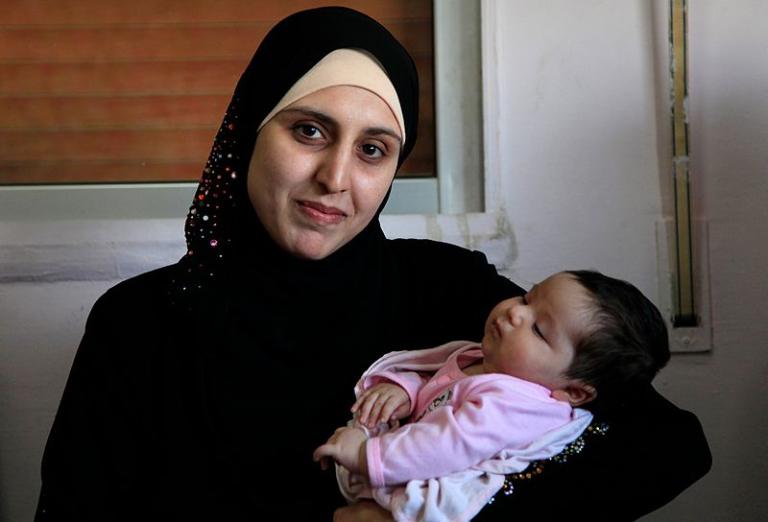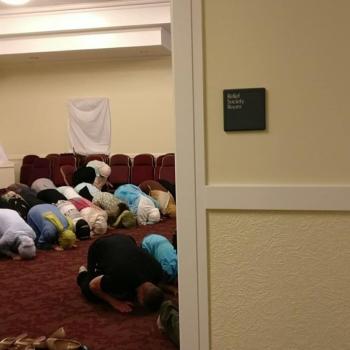
I’ve just begun reading Nancy Hartevelt Kobrin, The Banality of Suicide Terrorism: The Naked Truth About the Psychology of Islamic Suicide Bombing (Dulles, VA: Potomac Books. 2010).
Thus far, I’m not favorably impressed. I can only hope that it gets better.
Dr. Kobrin, a psychoanalyst who has strong ties to Israel but practices in Minnesota, offers an interesting thesis, which she states in various ways: “Islamic suicide terrorism can be understood as a new variant of an old problem — domestic violence” (1) “The Islamic suicide attack is a hybrid of domestic violence’s murder-suicide, serial killing, and the Arab clan custom of honor killing” (11). “This book explains Islamic suicide terrorism as displaced rage against the ‘Early Mother’ of childhood” (3). “Islamic suicide bombings are a form of displaced violence about the Early Mother in life, especially the Early Muslim Mother and the disavowed wish to murder her” (13). “The terror in Islamic suicide terrorism is nothing more than displaced murderous rage meant for the Early Mother . . . The terrorists do [what they do] because they have the need to hate and the need to have enemies, needs stemming from the externalization of the hatreds developed through blaming and shaming child-rearing practices, learned in early childhood, while these nascent terrorists were ’embedded’ in their families” (20). “Islamic suicide terrorism is informed by the child’s experience that violence and force are to be used as a means to control others. It is learned behavior, which is ingrained early in life” (4)
I become quite uneasy when I read phrases like that casual nothing more. Is there, perhaps, any political dimension to suicide terrorism? Is it really “nothing more” than an aftereffect of experiences in early infancy and childhood? Really?
Dr. Kobrin is plainly follows the lead of Sigmund Freud in her approach:
“Man created religion in order to fill a painful void left by the inability to mourn the loss of the Early Mother” (24).
She’s not quite an orthodox Freudian, though. She puts St. Sigmund himself on the couch, telling her readers that he didn’t really talk about “the Early Mother” because of his own “conflicted, ambivalent relationship with his own mother” (27).
Terrorists, says Dr. Kobrin, “are terrified to separate from their mothers psychologically and remain fused with them, which binds and blinds them” (xvii).
I would certainly like to see some evidence for that claim, some data. Thus far, though, I’ve seen none.
“[T]errorists have impaired thinking because they lack a maturity stemming from independence” (xviii).
Well, maybe. But maybe not.
Muhammad Bouyeri, she says, killed Theo van Gogh on an Amsterdam street because his mother had just died and her death had left him feeling bitter and abandoned (xv). Perhaps. It’s not impossible. But some actual evidence would be nice.
Beyond the seemingly ungrounded character of her assertions, though, it’s their sweeping nature that astonishes me:
At one point, Dr. Kobrin writes of “the Islamic suicide terrorists and all their accessories to the crime,” and she includes among those “accessories” not only “the engineer-bomb maker, the recruiter, the sender, the escort, [and] the charismatic leader” but “their mothers and fathers, their uncles, the clan, the tribe, the umma” (21). It’s a comprehensive indictment of absolutely every member of the Islamic community worldwide — which, in Arabic (including in the Qur’an itself) is called the umma. “They are all like newborns. They have never been allowed to grow up, to mature, or to be free, independent, self-sufficient, confident, and competent human beings. They have been raised to stay immature all their lives through terrorizing and shaming child-rearing practices” (22).
I have to admit that, in my judgment, anyway, Dr. Kobrin has been flirting thus far with what looks very much like a flagrant form of ethnic stereotyping, even racism. And she’s doing it on the basis of virtually no actual data.
“Arab culture — as found in Saudi Arabia — is the venerated culture for the Muslims” (9, emphasis in the original).
Really? Would Qataris agree to this, let alone Egyptians, Iraqis, Lebanese, and Moroccans? Does she have any evidence for her announcement? And, since she’s purporting to describe “the Muslims” generally, what about Indonesians, Turks, Iranians, Pakistanis, and Malaysians? And what of Muslims living in, say, Florida and Yorkshire and New South Wales?
The generalizations are vast, and deeply negative:
“The Arab Muslim culture in which they live has not permitted their children to grow up into confident and competent adults. Not being allowed to separate psychologically leaves their children feeling distrustful and terrified of the outside world and induces an inordinate amount of persecutory anxieties” (xvii)
“Where you have a devalued woman and an overidealized mother, as you do in Arab and Muslim cultures” (1)
“In Arab Muslim culture, the mother . . . herself is a victim” (4).
“[T]he young mother in these cultures has been so utterly devalued, abused, and traumatized as a child that when she becomes a mother, often at a young age, she is compromised. She struggles in her capacity to mother in a completely unsupported environment in which she is further abused” (3)
“In Arab Muslim families, children are not considered as individual personalities” (5).
“Arab Muslim culture is not one in which children are loved and hugged appropriately” (6)
“[I]n Arab Muslim culture everything is done in order to acquire prestige, which is confused with honor” (21)
“That there is widespread sexual abuse of children, and of girls in particular, should be an obvious indicator as to how men in the Arab Muslim world feel about themselves” (12)
In Arab Muslim culture, writes Dr. Kobrin, “Little boys are treasured and adored while little girls are despised” (19). “Arab Muslim boys grow up to become men who do not respect women” (19). Male children in Arab Muslim culture are psychologically, emotionally, and intellectually stunted by the way they’ve been raised (5).
Does some potential evidence seem to contradict her thesis? Do some informants seem to tell a different story? No problem! They’re lying. Dr. Kobrin simply dismisses contrary claims:
“Even though these families may claim to the media that their sons and daughters who became terrorists are really sweet, kind, and normal people, this assertion should be doubted and treated skeptically since their culture of shame has so infused the group’s sensitivity to criticism. They must always present a good face to the public because they feel so excruciatingly shamed” (10).
“The Arab Muslims have chosen to deny that honor killing is cold-blooded murder and that suicide bombing is mass slaughter of the innocent” (11)
Dr. Kobrin describes how, in “Arab Muslim culture,” a woman or a girl who has lost her “honor” is “put to death in an honor killing” (21).
But how common is this? How widespread? Are there socio-economic or class factors involved? Thus far at least, Dr. Kobrin has nothing to say about such questions. Even less than I’ve said:
Sometimes, her declarations have been a bit weird:
“Honor killing is . . . a misnomer since it has nothing to do with honor. . . . My colleague Dr. Chesler rightly refers to it as ‘honor murder'” (11)
But it’s self-contradictory for Dr. Kobrin to object to the adjective honor in the phrase honor killing while endorsing her colleague’s formulation honor murder.
Among her illustrations of Arab Muslim culture, which she interprets in a more or less Freudian way, is “the all-enveloping burka, which the Taliban has [sic] imposed on women it [sic] controls” (15). But the Taliban control portions of Afghanistan, which isn’t Arab. The burka is Afghan. And the Taliban aren’t Arabs, either.
And this statement strikes me as simply and self-evidently false:
“War is the misrecognition of the other as feared when, in fact, the other is familiar and legitimate” (34).
The Third Reich wasn’t “familiar and legitimate,” and Churchill didn’t “misrecognize” the Nazis.
“[I]t is estimated,” writes Dr. Kobrin, “[that] 1 percent of the nearly 1.5 billion Muslims become violent jihadis” (22).
Really? Is there any actual evidence that there are fifteen million violent jihadis out there?
https://www.deseretnews.com/article/865676865/Why-are-there-so-few-Muslim-terrorists.html
But I close with what I regard as merely a silly expression of that old-time Freudian religion:
Suicide bombing, Dr. Kobrin suggests, “merges” or “fuses” the bomber with his or her victims — which, seemingly inevitably for a psychoanalyst, means that it’s really about sex (28).
As I say, I hope that it gets better. Soon.












